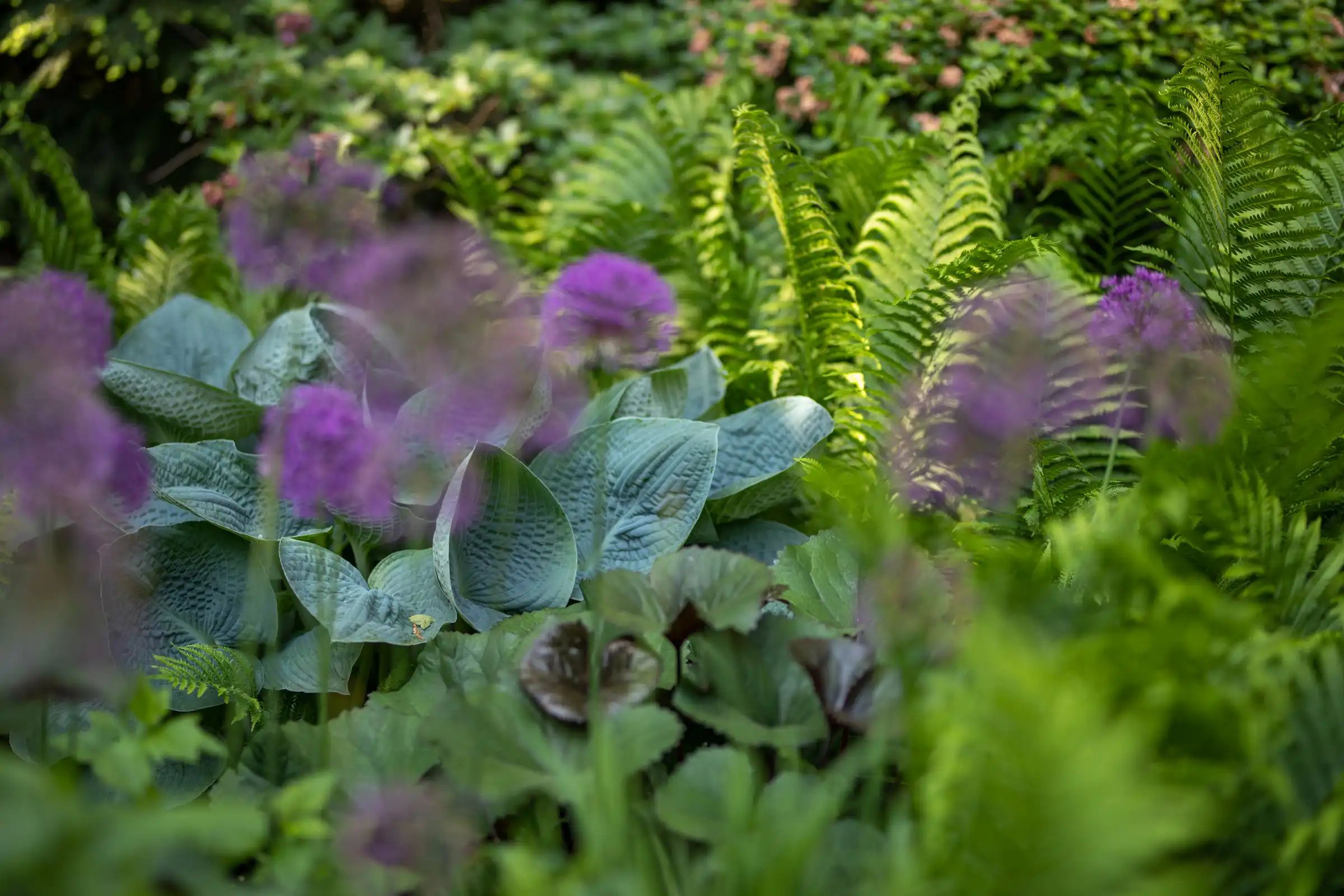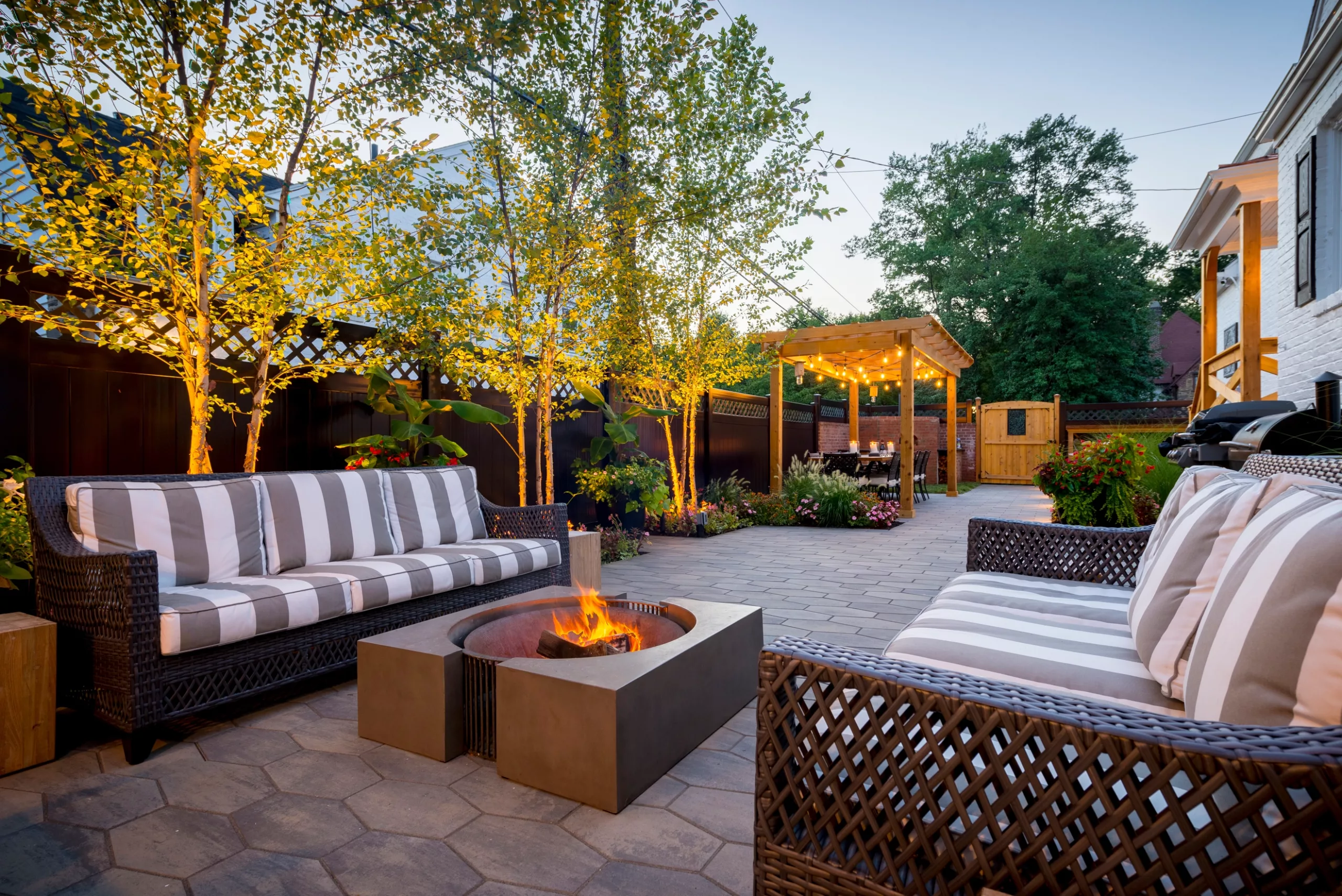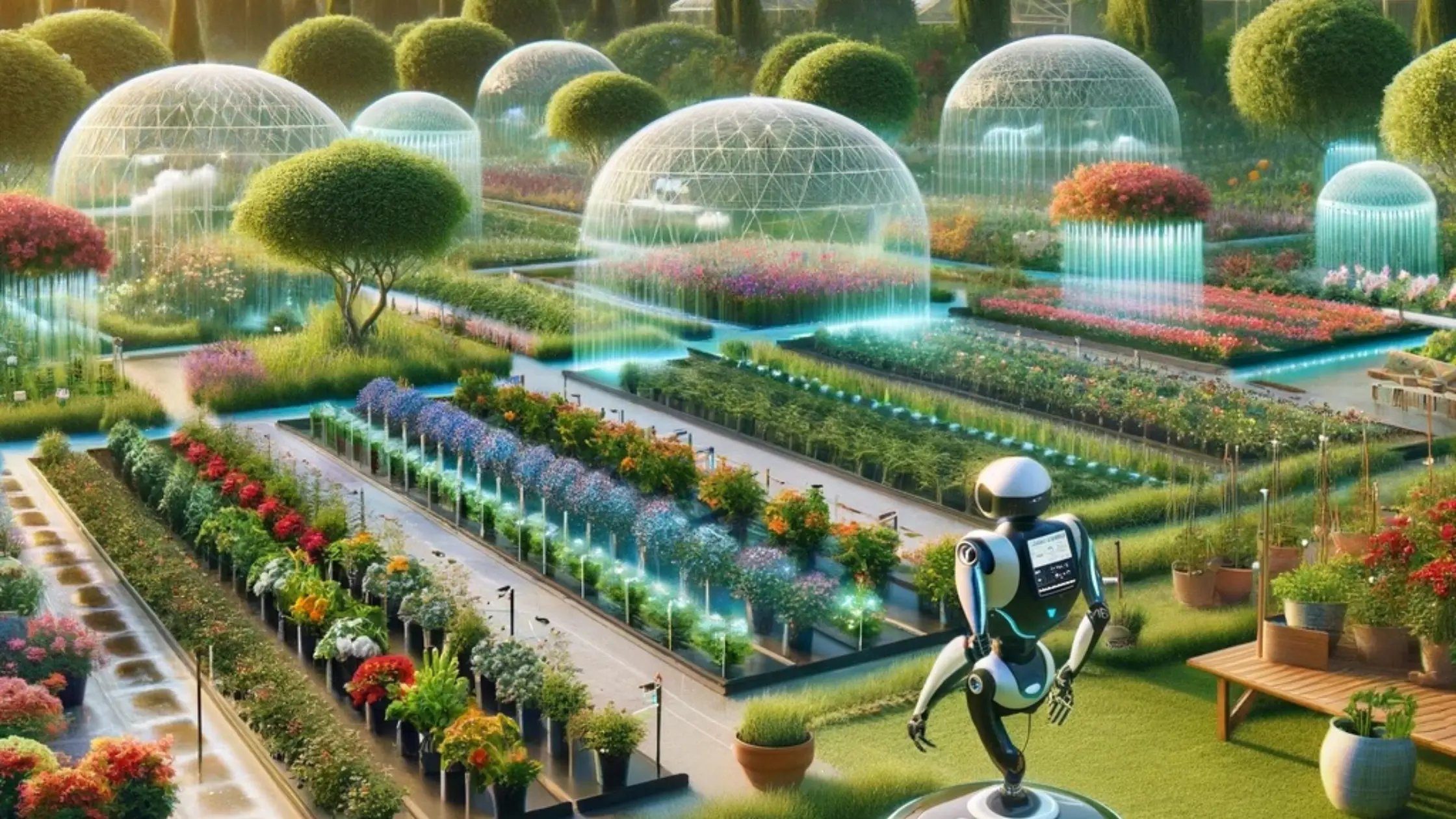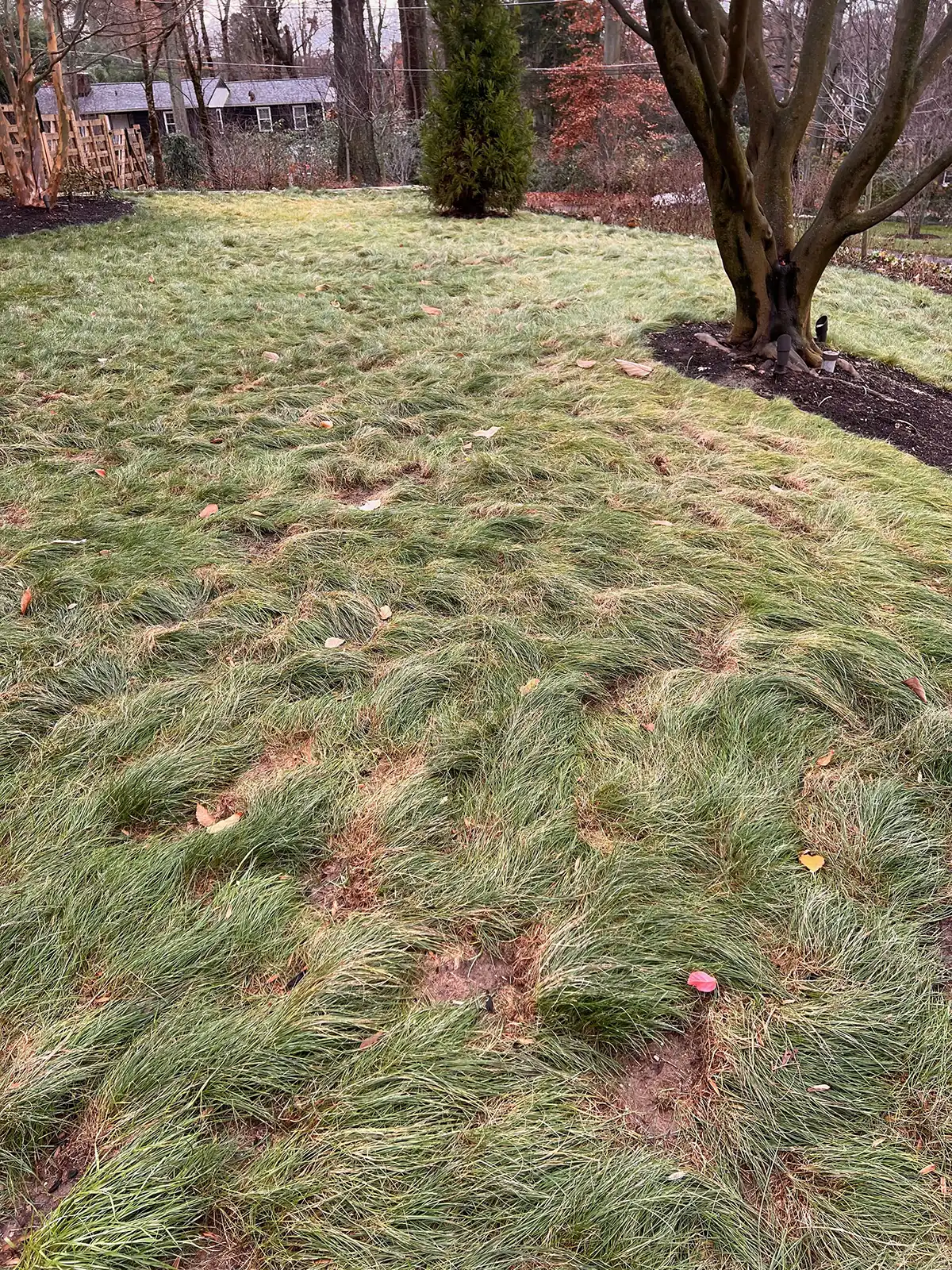According to recent studies by the NOAA, EPA and other scientific organizations, the future of the Mid-Atlantic looks warm, stormy and wet. The general consensus indicates an estimated 1-5% increase in average annual precipitation over the next fifteen to twenty years, along with a litany of increasingly frequent extreme storms—known by many as “100-year storms”—causing millions of dollars in damage each time they hit. The associated rise in temperature—approximately 2-3 degrees in our region over the last century—contributes as well: for every 1°F of warming, the atmosphere becomes capable of holding an additional 4 percent of water vapor, meaning (you guessed it), more precipitation. If these stats don’t alarm you much, they should; even small rises in average annual precipitation greatly increase the chance of residential properties developing stormwater management issues. In fact, if the trends continue as predicted, excess rainfall in this region may eventually affect just about every property in it—including yours.
Check out the NOAA chart below to see a visual representation of the upward trend in extreme storms:

Figure 1. Extreme One-Day Precipitation Events in the Contiguous 48 States, 1910–2015
In a way, 2018 showed a glimpse of what’s in store here. In our service area–primarily the Main Line suburbs of Philadelphia–record rainfall battered us all season long, causing flooded streets, landscapes, basements, driveways and more. At one client’s house, an overflowing creek even wreaked havoc on a row of shrubs we’d just planted, carrying almost thirty downstream in the midst of a torrential downpour!
While stormwater management is as old as civilization itself (think levees and aqueducts), its significance is at an all time high right now. Compared to when Terren Landscapes first started in 1983, or even just ten or twenty years ago, the number of homeowners contacting us to diagnose, design and install drainage systems has risen dramatically. Here in our Mid-Atlantic region, properties new and old are developing issues they never would have in the past. Though the truly devastating precipitation levels may still be a few decades away, the current situation is already alarming, as the collective damage to homes (particularly basements and foundations) and their surrounding landscapes begins to add up.

Here you can see an example of a drainage issue uncovered incidentally during a planting project. There was no indication beforehand that water was sitting under the porch, rotting away at the decking. But once we removed the grass to install a garden bed, the resulting space filled with groundwater, exposing the problem.
Thankfully, problems with water on your landscape don’t often materialize overnight. Instead, they start as small puddles or occasional basement leaks, developing gradually into something far worse. This means you often have the chance to identify and solve landscape drainage issues before they cause any significant damage to your property. Learning to recognize the tell-tale signs listed below is the first and most important step. But once you know what to look for, it’s important to stay vigilant in checking for these signs after any big storms or excessive rainfall. If you recognize something, your next step should be to get a professional evaluation. While it’s easy to identify a symptom of poor landscape drainage, it takes experience and education to identify the cause(s) and solution.
The good news is it’s easy—and often free—to get a professional evaluation from a local landscaping company. Meeting with more than one contractor is beneficial as drainage solutions require local knowledge, experience and common sense. Listen closely and look toward a long term solution for storms bigger than the last one.
Five Signs Of Stormwater Manament Issues:
1. Excess water collecting in a lawn, driveway or garden bed that does not absorb for days or weeks after a big storm. The easiest landscape drainage issue to identify, puddling or “ponding” water generally indicates an issue with grading and/or soil composition (high clay content = poor drainage). Examples include flooded lawns, patios and garden beds—each of which can affect the health and usability of your landscape. While the “lay of the land” is most likely the cause, puddling water can also be evidence of clogged, broken or poorly-installed drainage systems and gutters.
2. Dead or dying plants and trees in soft and over-saturated soil. Visible surface water is easy to see and identify, but accumulating ground water below can be tricky. An area in your lawn or garden that stays soft, squishy or wet for extended periods is the most obvious indication. In these areas, plants tend to die, turn yellow or refuse to grow despite proper care. This is the result of “root rot,” which occurs when roots “drown” in water that isn’t percolating down like it should. When we suspect that might be the case, we break out the moisture meter or do a percolation test. If the area is over-saturated and there’s no obvious surface water—it’s likely an issue underground.
3. Water in the basement or foundation of your home. Every homeowner fears this, especially if the basement is recently finished or used to store valuables. While many factors can contribute to cracking or otherwise damaged foundations, water exerting what’s known as “hydrostatic pressure” around the perimeter is a common culprit. If these cases, perimeter drains and other stormwater systems may be installed to prevent and mitigate further damage.

Tough to grow grass or widen a garden bed in mud like this!

4. Mulch washout and silt buildup. A line of flowing surface water will often “wash out” any mulch in its way as it moves over a garden bed, leaving ugly bare spots and dirtying walks and drives. Silt and other debris get carried and deposited by surface water too, piling up in the same spots after every storm. If you notice this on your property, try to trace it back to the source of the water. This should tell you where the problem is originating.
5. Overflowing downspouts. The most straight-forward indication of ineffective stormwater management is simply an overflowing downspout. Here, a clog or obstruction in the gutter or drainage system is causing a backup, forcing water upwards instead of allowing it to drain. You might just need to clean the gutters or have a plumber flush the system with a specialized water jet. But make sure to request a full “drain scope” before and after—just to be sure.
If you’ve identified something from that list on your property, don’t panic just yet. Many problems can be solved with just a few simple fixes, like adding river stone around a foundation or planting dense ground cover in problem areas. Larger properties with extensive water management issues will require more complicated and expensive solutions, but homeowners ultimately save money anyway by avoiding future property damage. In every case, professional diagnosis is key, and as we mentioned before, it’s not hard to find it.
Four Common Stormwater Management Solutions:

There exist a number of solutions to landscape drainage issues, ranging from small, inexpensive alterations to full-blown stormwater management systems. Residential projects usually take less than a week to complete, but those requiring lots of grading and machine work can take much longer. In the end, every situation is unique and most solutions are too. In fact, part of being a successful landscape designer or architect is being able to recognize and adapt to the specific needs of every new property. So take a look at the list below to get an idea of what a fix might look like, but keep in mind it’s usually a mix and match sort of deal.
1. Adjusting the “Lay of the Land”. Most surface water issues result from depressions in the soil or improper grading. Tearing up and re-grading areas that do not pitch correctly allows water to flow where it should instead of ponding in low spots. These projects often require heavy machinery and lots of hauling, but that’s not always the case. On small properties, a couple wheelbarrows or some hand-raking might do the trick.
2. Installing a Landscape Drainage System. A variety of systems exist—some time-tested and others fairly new. French perimeter drains, for instance, have been around a long time and can do a lot to protect house foundations. But more comprehensive systems tying all downspouts, track drains and french drains into a central, underground line are a surer bet.

A freshly-installed, “rip rap” swale leading to a carefully-placed catch basin.

If done right, these will catch stormwater shedding from your impervious surfaces (roof, walkways, driveways…) and transport it to a discharge site out-of-view—preventing standing water by the house, lawn and garden even during extreme storms. Full systems are not always necessary, but generally speaking, the more comprehensive they are, the less you’ll have to worry about additional problems down the line.
3. Rain Gardens, Bioswales, and Rainwater Harvesting. These sustainable stormwater management solutions grow more popular every year. Though each plays a unique role in the process, their main purpose is essentially the same: reduce runoff and eliminate standing water. Rain gardens and bioswales achieve this by capturing surface water in a shallow channel (bioswale) or water basin (rain garden), where it can flow to a discharge site or percolate into the soil. Both are usually lined with a permeable layer of river stone and filled with native plant species, in order to facilitate absorption into the soil and create beneficial pollinator and animal habitats. Rainwater harvesting goes a step farther by collecting water in rain barrels or underground tanks, to be used for irrigation, hosing off the walkways, etc.
4. Adjusting the hardscapes. A walkway that pitches improperly or was installed at the wrong elevation can be just as problematic as a poorly graded lawn or garden bed. And unlike your lawn and garden, water collecting on a walkway or driveway during winter can lead to dangerous icy spots where you walk. A patch or repair job might be possible, but if not, strategically-installed track drains and catch basins are popular solutions. Often, customers with old or damaged hardscapes simply choose to redo them entirely. If going that route, you’ll also have the option of installing porous pavers or permeable gravel in place of stone or brick, preventing any runoff in the first place.
Check out the photo gallery below to see an example of an extensive, award-winning stormwater management project. Read through this quick description, then scroll through the before, during and after photos beneath!

In Progress
Project Description:
To effectively capture the storm water runoff, the existing downspouts were piped from the main house and the large detached garage to a large catch basin located at the low point in the driveway. The driveway catch basin contains two outlet pipes at different elevations within the basin allowing water from smaller rain events to enter the bioswale and rain garden area to percolate into the soil before excess water overflows into a sediment trap which filters out any debris and is then piped to an underground StormTech® pit to slowly percolate into the ground. The other outlet pipe in the driveway catch basin is used for larger storm water events, taking the water directly to the StormTech® pit.
Accepting and slowing the velocity of the storm water, mitigation of erosion, and filtering out pollutants contained in the “first flush” of rainfall are the primary functions of the bioswale and rain garden. Planting these areas with mostly native plant species helps carry out these functions while attracting and providing shelter for wildlife.
Each of these solutions will vary in cost depending on the specifics of the property and problem. Some issues can be solved relatively simply once diagnosed properly, though on larger properties with complex projects, machinery, materials and labor add up fast. The best way to avoid an expensive project is to take action as soon as the problem is noticed and before too much damage is done. This gives you time to talk with a number of contractors, your town officials and neighbors. With time and good advice in hand, just about every drainage issue can be solved.

Some people will want to save money with a DIY approach. To them we say: Good luck! If you’re particularly fit and handy, with some experience in construction or landscaping, you might have some success. But in most cases, homeowners are wasting their time and money, and can expect to be calling a professional afterward to clean up the mess. We never discourage people from doing their own landscape projects, as we—better than anyone—understand the desire to get outside and work the land. But stormwater management is not like pruning spent rose blooms; it takes education and experience to get right, and can be costly if done wrong.

Here’s an example of a straightforward landscape drainage plan. Notice all the elevations? Even simple projects involve some complex calculations.
The Bigger Picture:
We’ve talked about what a rainier Mid-Atlantic region could mean for your home and your wallet, but not how it might affect something even more concerning: your health. Macro-level effects of a changing environment go beyond our front lawns, into the realms of public safety and the economy. While they may be harder to quantify, and are just beginning to feel real, they will be front and center in the coming years, and you should know what they are.
Contaminated and scarce drinking water will likely be our biggest concern in the Philadelphia metro area. Here, our two main water sources are the Schuylkill and Delaware rivers.

For years, industrial pollution, wastewater and soil erosion dirtied them so much that the quality of our region’s drinking water plummeted. Extensive restoration projects and legislative actions over the past century have helped clean up both, but rising precipitation levels and the subsequent “runoff” are threatening to contaminate them once again.
The term “runoff” may sound familiar; it’s defined as any stormwater shed from impervious (aka impermeable) surfaces into nearby sewers and water bodies. Unlike water absorbed into the soil and filtered by sediment on its way to the aquifer beneath, runoff never gets “cleaned” before reaching rivers, streams or water treatment plants. Instead, it actually collects more pollutants, such as pesticides, dirt, trash and oil residue, on its way. In large storms, excess silt from cleared woodlands contributes as well, muddying the rivers and straining our treatment plants to their limits. Though the development of natural woodlands might be the largest contributing factor—an increase in runoff is unavoidable whenever a natural woodland is developed into roads, housing etc—the runoff from our existing residential properties plays a huge role too. If we can each begin to implement sustainable stormwater management solutions, like rain gardens, rain barrels, and bioswales, we can help mitigate the effects of the runoff we ourselves create. In the end, it’s not just a smart financial decision, but also a part of our responsibility as humans to keep the environment healthy enough for current and future generations to live in.

This quote, taken directly from the City of Philadelphia “Drinking Water FAQ”, helps emphasize the risks posed to our drinking water by environmental changes and pollution in the Mid-Atlantic region.
“Increased overall precipitation and changes in vegetation could exacerbate stream bank scouring and lead to increased levels of pollutants washing into our waterways. Severe weather could compromise water and wastewater facilities and infrastructure and lead to more frequent spills and accidents. Increased temperatures could foster bacterial growth and substantially decrease the oxygen supply available for aquatic life. Water availability may also become a bigger concern with the potential for climate change to produce more frequent, short-term droughts in our area.”
A polluted water supply isn’t the only “bigger picture” concern though. Consider, for instance, mosquitoes and disease. As mosquitoes are attracted to standing water and warm weather, an increase in precipitation and temperature has a dramatic effect on their population. If all they did was leave bug bites, it’d just be annoying. But diseases they carry, like the West Nile and Zika viruses, are a real threat to public safety. Preventing standing water from accumulating on your property is the first step to to keeping them at bay—for now.

Polluted runoff from developed areas and illegal trash dumping turn rivers into dirty, contaminated sources of drinking water.
Macro effects are important to be aware of, but the money we as taxpayers pay for flooded roads and mosquito control is minimal compared to what a serious landscape drainage problem can cost a residential homeowner. And considering the Mid-Atlantic region is experiencing heavier and heavier precipitation, the likelihood of you being that homeowner is increasing exponentially year after year. As we mentioned earlier, the amount of precipitation falling during extreme storms is already up (55 percent in the Northeast and 42 percent in the Midwest since 1958!). So now, more than ever before, it’s important you keep an eye out for the signs of stormwater management issues listed above. Catching something before it begins to damage your home or landscape is essential; getting an evaluation and acting preemptively to prevent it in the first place—even better.
Sources:




